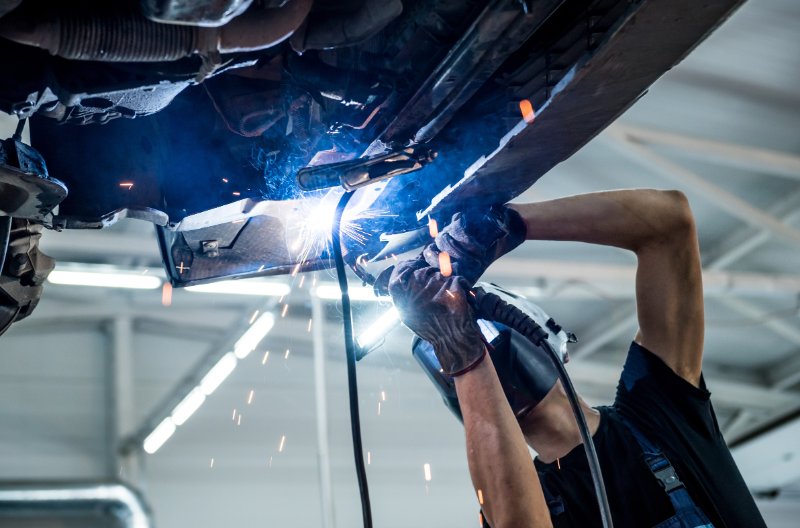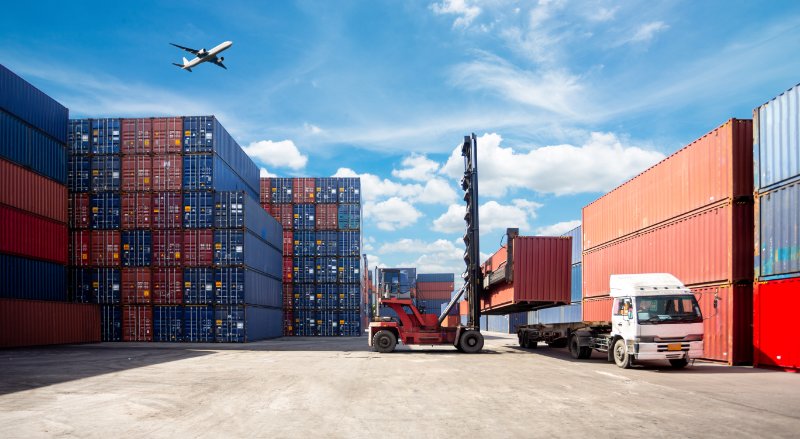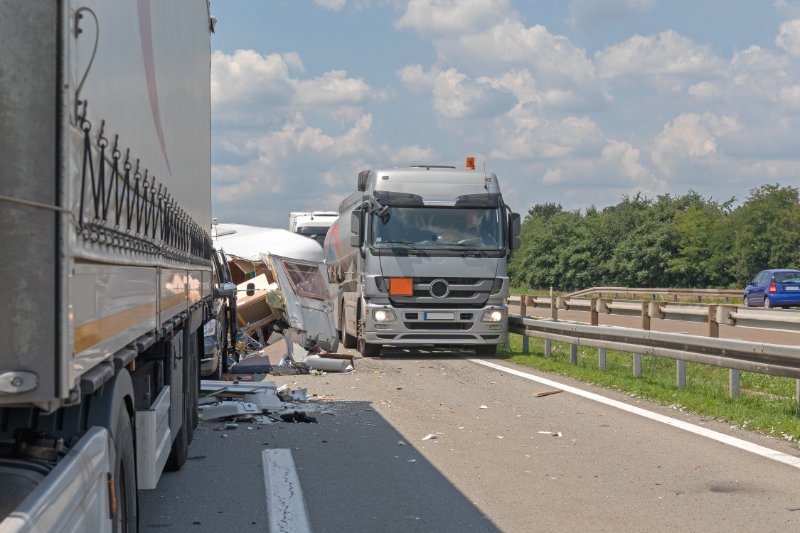Commercial truck accidents are usually more complicated than standard car crashes due to the number of parties involved and the safety regulations governing the trucking industry. Unlike passenger-car accidents, where fault is usually only sorted out between the two drivers to the crash, liability and fault in a truck accident can be difficult to determine and often involves the “motor carrier” that employs the truck driver. This blog explains how various parties could be liable in a truck accident, how multiple parties might share responsibility, the factors that determine liability in tractor-trailer accident cases, and specific state laws that might affect these cases in Montana and Wyoming.
Parties that Can Be Held Liable in a Truck Accident
Liability can fall on several different entities depending on the circumstances of the accident.
Truck Driver

The truck driver is often, and wrongly, the first or only party considered when determining who is at fault for a big truck hurting someone. Most crashes are caused, at least in part, by some driver error—such as speeding, distracted driving, driving under the influence, or driving too long and being fatigued. In these cases, of course, the driver could be held responsible. For example, if a truck driver falls asleep at the wheel and causes a collision, they could be liable for any damages resulting from the accident. Depending on the situation, the driver’s liability may be shared with the trucking company or others. Under any circumstance, it is critical to understand that the trucking company, not the driver, will use its insurance to pay the settlement or verdict. This means that even if the jury were to find the driver 100% at fault, insurance would pay that verdict.
Trucking Company

The trucking company that employs the driver can also be held liable, especially if the accident was caused by policies or practices enforced by the company. For example, if a company requires drivers to meet unrealistic deadlines, leading them to drive for excessive hours without rest, the company could be found responsible for the accident. In another situation where the company fails to maintain its vehicles properly, resulting in mechanical failure, liability could also rest with the trucking company.
Read our case study involving a trucking company settlement.
Manufacturers

If a defect in the truck or one of its components contributed to the accident, the manufacturer of the truck or the faulty part could be held liable. For example, if faulty brakes cause a truck to lose control and crash, the manufacturer or the mechanic that failed to properly service the brake system might be responsible for the damages. In such cases, the liability might also extend to the truck manufacturer if it can be proven that the defect was present when the truck left the factory.
Contractors & Other Vendors

Could Multiple Parties Be Held Liable in a Truck Accident?
Absolutely! It is common for multiple parties to share liability in a truck accident. For example, both the driver and the trucking company might be responsible if the driver was fatigued due to the company’s demanding schedule. An experienced truck accident attorney can help determine the extent of each party’s liability and ensure you receive fair compensation from all responsible entities.
Factors that Could Determine Whether a Truck Driver or Trucking Company Can Be Held Responsible
Several factors can influence whether the truck driver, the trucking company, or another party can be held responsible for an accident.
Root Cause of the Accident
The root cause of the accident is often the most critical factor in determining liability. In some cases, multiple factors could contribute to the accident, leading to shared liability. Stinson Law Group uses a “root cause roundtable” to determine the root cause of each trucking crash. This is a practice of having very experienced truck injury attorneys apply the evidence in the case against the federal safety rules to find the root cause of a crash. Often, the root cause is not the driver but the poor safety practices of the trucking company.
Adherence to the Law
Both truck drivers and trucking companies are required to adhere to federal and state regulations governing commercial vehicles. If either party violates these laws—such as hours-of-service regulations, maintenance requirements, or weight limits—they could be held liable for any accidents that result.
Company Policies
The policies and practices enforced by the trucking company can also influence liability. If a company encourages or mandates unsafe driving practices, such as skipping rest breaks, allowing a driver to use a handheld device while driving (like a phone), or overloading the truck, it could be held liable for accidents caused by these practices. On the other hand, if the company enforces strict safety protocols and the driver violates them, the driver may bear more responsibility.
An experienced tractor-trailer accident attorney will thoroughly investigate the cause of the accident, federal and state regulations, and company policies to find the root cause of the crash and hold the right parties liable.
State-Specific Truck Accident Liability Laws
Truck Accident Liability in Montana

In Montana, truck accident liability is governed by modified comparative negligence laws. This means that each party involved in the accident can be assigned a percentage of fault, and their liability will be proportional to that percentage. For example, if a truck driver is found to be 70% at fault for an accident, and the other driver is 30% at fault, each party is responsible for their portion of the damages. Montana law (as well as federal trucking law) also requires truck drivers and companies to carry specific levels of insurance, which can influence the amount of compensation available to accident victims.
Truck Accident Liability in Wyoming

Schedule a Consultation with a Truck Accident Attorney
Have you been involved in a truck accident? Don’t wait. Get in touch with our team of knowledgeable truck accident attorneys today!
We will gather the necessary evidence, identify all responsible parties, and navigate the complexities of state-specific laws to build a strong case on your behalf. Schedule a free consultation with Stinson Law Group now!
Read More Legal Articles
Interested in learning about Wyoming and Montana laws as they relate to injury, business and construction, and tractor-trailer accidents? If so, please read more of our resource articles.




